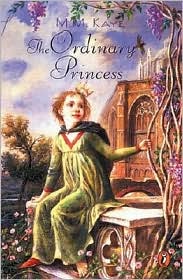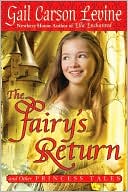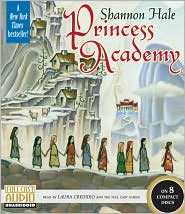What a cheesy blog title! But, it's apropos to the books I want to post about.
As the mom of two girls, I have grown to enjoy fairy and princess stories. Before my girls were born, my husband gave me a copy of The Princess and the Goblin by George MacDonald. That book was my first introduction to fairy tales that weren't of the Disney genre. I loved it. MacDonald's descriptions were wonderful and the story, though a bit dark, drew me in.
There is a sequel, The Princess and Curdie. I dearly loved both, though it's been several years since I've read them so I can't recall a lot of details about the stories.
Because of these stories, I always pick up princess stories when I get a chance.
On Saturday at a yard sale, I picked up The Ordinary Princess by M.M. Kaye. Before you read the story make sure you read the author's forward. It added to the story to understand why she wrote it and how it came to be written. Some reviewers on Amazon criticized it for being too predictable--but aren't all fairy tales predictable? The story is one of a princess who is ordinary--she has no beautiful hair or remarkable good looks. She is simply ordinary. This is considered a horrible thing by the rest of her family. The story is one of her finding her own way and enjoying life. She finds what really matters. In the end, she finds a prince who sees her for who she is--which is what everyone who reads a fairy tale really wants to read.
Last Wednesday at Barnes and Noble, I bought a collection of Gail Carson Levine's Princess Tales, The Fairy Returns and Other Tales. This book is a collection of Ms. Levine's six princess tales. I read Princess Sonora and the Long Sleep several years ago. I enjoyed the wit with which she added a little twist to the story of Sleeping Beauty. The twist was that Princess Sonora is given the gift of being 10 times smarter than everyone else. It's fun to see how that twists is woven through the story. I enjoyed all six of the tales in this book. They were clever and witty. I will say, though, that I began to sense some feminist undertones in the stories. Nothing overt and nothing objectionable. But the princesses were all definitely strong protagonists. One friend mentioned to me that as she and her daughter read the American Girl books, they began to realize that the bad people in the stories were always men. I thought that was very interesting. There was one commonality that the stories all had though which I think you should be aware of. In each of the stories, the princess (or prince) was smarter and wiser than the parents. It was very subtle. I think that I will let my daughters read this book because the characters are not disrespectful or sassy to the parents, but I will definitely talk to them about it afterwards and see what they think of this commonality among the stories.
Another princess story just came to my mind. Two or three years ago, I read The Princess Academy. It is the story of Miri and her time in the Princess Academy. One of the girls will be selected to become the prince's bride. This is not a book for elementary age students, but is more appropriate for middle school readers. It is a good story with suspense and twists. I enjoyed it.
As an adult, I often struggle to find light hearted reading that I can pick up for fun. These books are all ones I'd highly recommend. For middle school and high school girls, I also think these books would be fun reads. Just ask what they think about Ms. Levine's after they've read it, though, and bring it to their attention about the relationships between the parents and children. It's a good example of how things can slip by unnoticed unless we think about what we read.




No comments:
Post a Comment